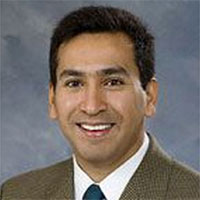 Our thanks to Dr. Julio Cantero, Medical Director for the Center for Brain Health for contributing this article. The Center for Brain Health and Youthful Aging Home Health are a part of a team of visiting professionals who complement the Alderman Oaks Staff in serving our residents.
Our thanks to Dr. Julio Cantero, Medical Director for the Center for Brain Health for contributing this article. The Center for Brain Health and Youthful Aging Home Health are a part of a team of visiting professionals who complement the Alderman Oaks Staff in serving our residents.
Many of us are worried about memory loss. We often fear getting Alzheimer’s disease especially when there is a family history. A certain amount of forgetfulness is to be expected with age. Sometimes the reason is more significant.
Science and research are advancing rapidly and there is a lot we know today about reducing factors that place the brain at risk while increasing factors that protect the brain.
To begin with, approximately 96% of Alzheimer’s patients are over the age of 65. Therefore, aging is the most prevalent risk factor of all for Alzheimer’s disease. Increasing evidence suggests that many risk factors for Alzheimer’s disease can be modified while increasing those factors that protect the brain.
Alzheimer’s disease pathology in later years develops over decades. Hence modifying risk factors require lengthy follow-up to show effects on the incidence of Alzheimer’s’ disease. Yet focusing on modifying Alzheimer’s disease risk, instead of diagnosis, provides a more realistic target for prevention strategies.
The more significant modifiable risk factors identified as being associated with increased risk of cognitive decline include:
1. Higher midlife Body Mass Index: Related to higher risk of dementia and Alzheimer’s disease at a later age independent
of other obesity related risk factors.
2. Smoking: Potentially contributes to the second largest number of Alzheimer’s disease worldwide. The most likely
mechanism is vascular disease.
3. Diabetes at Midlife: Poorer glycemic control was associated with significantly faster decline in memory.
4. Low educational level: Education and mental stimulation throughout life help to build cognitive reserve that
enables individuals to continue functioning at a normal level despite experiencing neurodegenerative changes.
5. Physical inactivity: Associated with increased risk of several risk factors such as obesity; diabetes and hypertension
associated with increased risk of dementia.
6. Homocysteine levels: Homocysteine an amino acid and a breakdown product of protein metabolism that, when
present in high concentrations, has been linked to vascular changes in the brain.
7. Depression: A history of depression may confer an increased risk.
8. Midlife hypertension: Correlated with greater cognitive decline versus later life hypertension.
9. Traumatic brain injury: A blow to the head can damage a person’s chances of staying cognitively healthy in the
future.
Keeping in mind, association does not mean causation. Researchers continue to understand the physiology of how known risk factors do in fact place us at risk. Modifying risk factors for Alzheimer’s disease (and other conditions) and increasing protective factors has now become a new branch of medicine called “LIFESTYLE MEDICINE”.

Nicci Kobritz
President, Youthful Aging Home Health
CEO, Center for Brain Health
For more information go to www.youthfulaging.net or www.thecbh.com.

 Find our Location
Find our Location